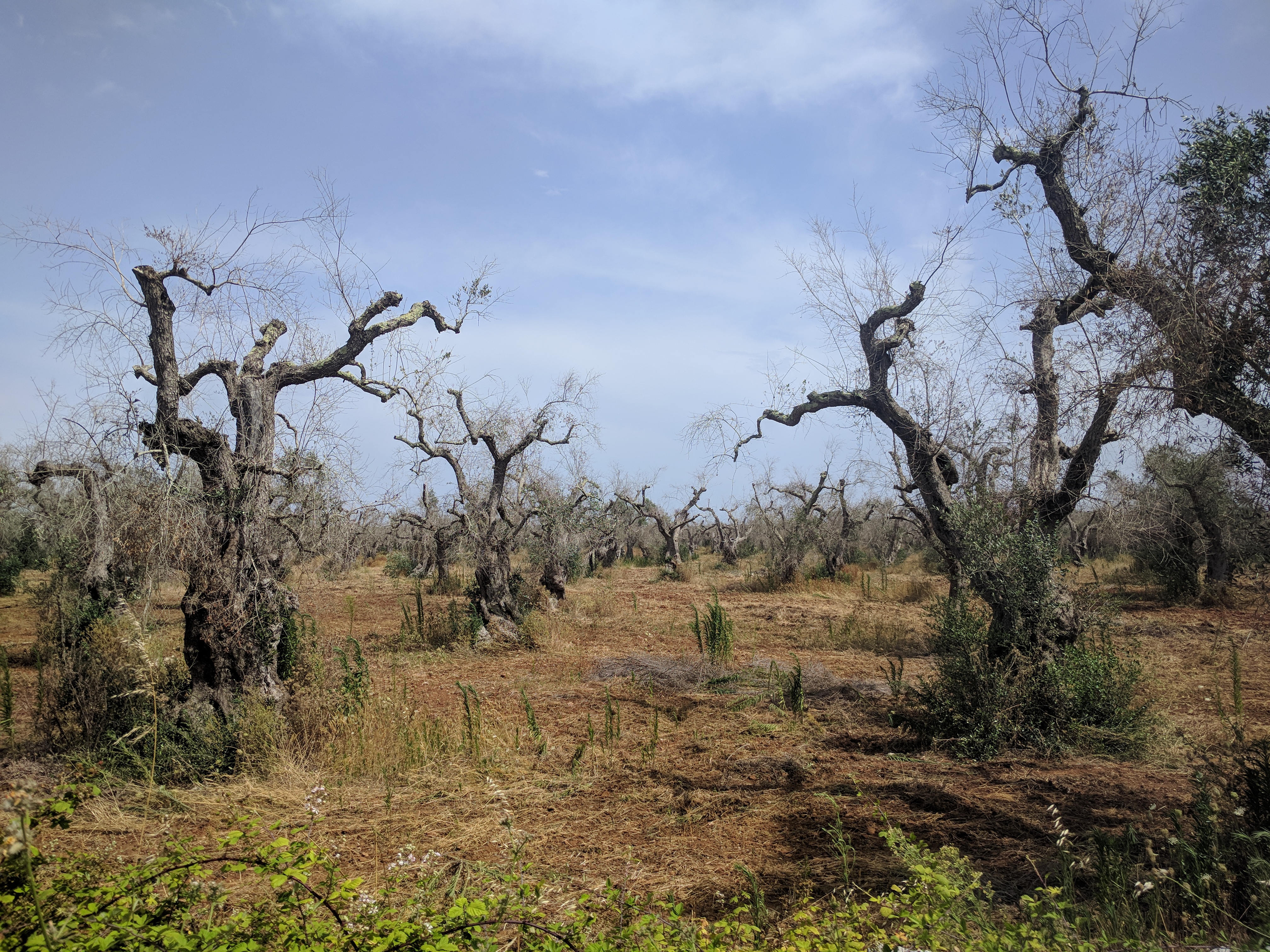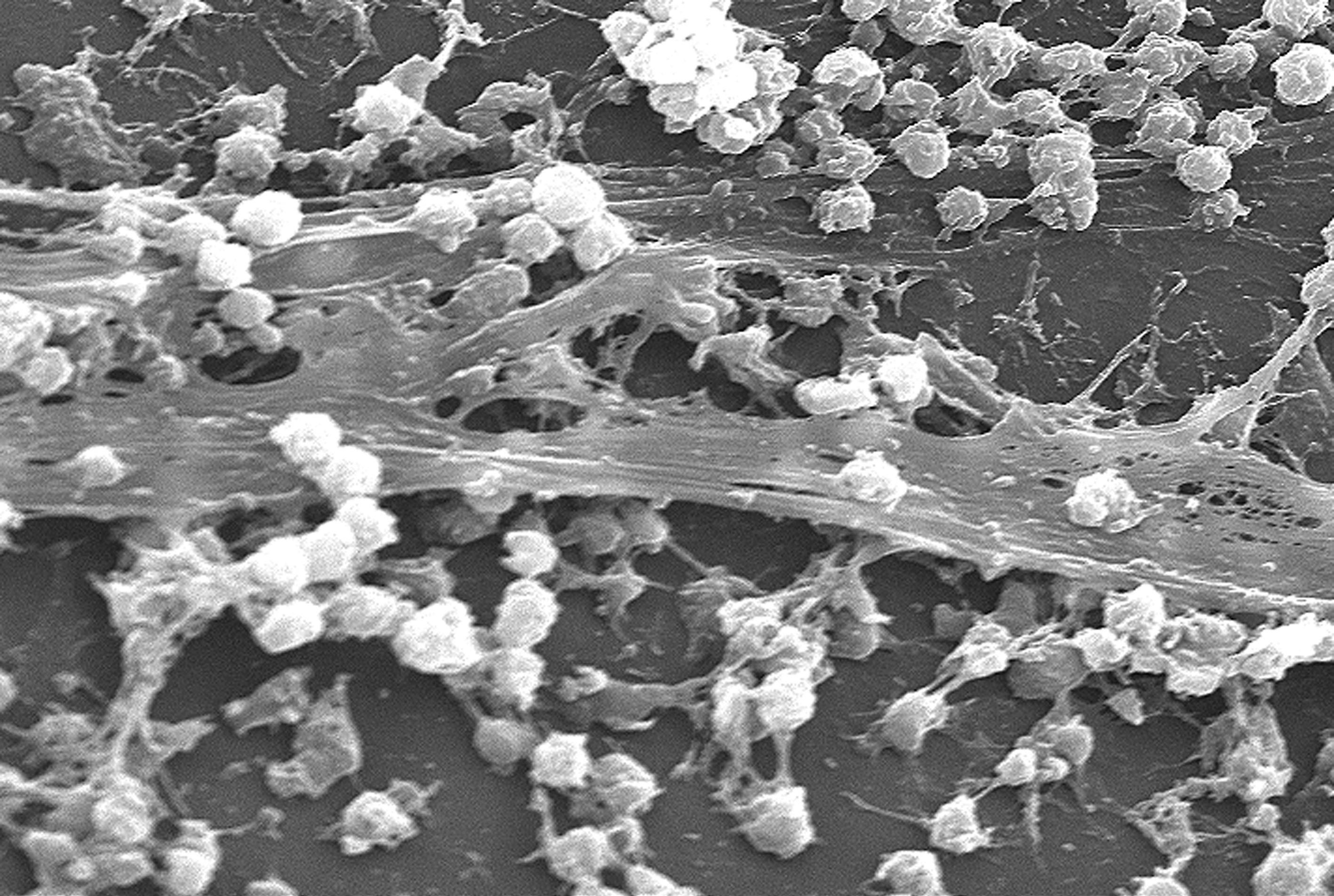|
Pierce's Disease
''Xylella fastidiosa'' is an aerobic, Gram-negative bacterium of the genus ''Xylella''. It is a plant pathogen, that grows in the water transport tissues of plants ( xylem vessels) and is transmitted exclusively by xylem sap-feeding insects such as sharpshooters and spittlebugs. Many plant diseases are due to infections of ''X. fastidiosa'', including bacterial leaf scorch, oleander leaf scorch, coffee leaf scorch (CLS), alfalfa dwarf, phony peach disease, and the economically important Pierce's disease of grapes (PD), olive quick decline syndrome (OQDS), and citrus variegated chlorosis (CVC). While the largest outbreaks of ''X. fastidiosa''–related diseases have occurred in the Americas and Europe, this pathogen has also been found in Taiwan, Israel, and a few other countries worldwide. ''Xylella fastidiosa'' can infect an extremely wide range of plants, many of which do not show any symptoms of disease. Disease occurs in plant species that are susceptible due to bloc ... [...More Info...] [...Related Items...] OR: [Wikipedia] [Google] [Baidu] |
Gram-negative Bacterium
Gram-negative bacteria are bacteria that, unlike gram-positive bacteria, do not retain the crystal violet stain used in the Gram staining method of bacterial differentiation. Their defining characteristic is that their cell envelope consists of a thin peptidoglycan cell wall sandwiched between an inner (cytoplasmic) membrane and an outer membrane. These bacteria are found in all environments that support life on Earth. Within this category, notable species include the model organism ''Escherichia coli'', along with various pathogenic bacteria, such as ''Pseudomonas aeruginosa'', ''Chlamydia trachomatis'', and ''Yersinia pestis''. They pose significant challenges in the medical field due to their outer membrane, which acts as a protective barrier against numerous antibiotics (including penicillin), detergents that would normally damage the inner cell membrane, and the antimicrobial enzyme lysozyme produced by animals as part of their innate immune system. Furthermore, the outer ... [...More Info...] [...Related Items...] OR: [Wikipedia] [Google] [Baidu] |
Chlorosis
In botany, chlorosis is a condition in which leaves produce insufficient chlorophyll. As chlorophyll is responsible for the green color of leaves, chlorotic leaves are pale, yellow, or yellow-white. The affected plant has little or no ability to manufacture carbohydrates through photosynthesis and may die unless the cause of its chlorophyll insufficiency is treated and this may lead to a plant disease called rusts, although some chlorotic plants, such as the albino ''Arabidopsis thaliana'' mutant ''ppi2'', are viable if supplied with exogenous sucrose. The word ''chlorosis'' is derived from the Greek ''khloros'' meaning "greenish-yellow", "pale green", "pale", "pallid", or "fresh". In viticulture, the most common symptom of poor nutrition in grapevines is the yellowing of grape leaves caused by chlorosis and the subsequent loss of chlorophyll. This is often seen in vineyard soils that are high in limestone such as the Italian wine region of Barolo in the Piedmont (wine), Piedmont ... [...More Info...] [...Related Items...] OR: [Wikipedia] [Google] [Baidu] |
Vegetative Reproduction
Vegetative reproduction (also known as vegetative propagation, vegetative multiplication or cloning) is a form of asexual reproduction occurring in plants in which a new plant grows from a fragment or cutting of the parent plant or specialized reproductive structures, which are sometimes called vegetative propagules. Many plants naturally reproduce this way, but it can also be induced artificially. Horticulturists have developed asexual propagation techniques that use vegetative propagules to replicate plants. Success rates and difficulty of propagation vary greatly. Monocotyledons typically lack a vascular cambium, making them more challenging to propagate. Plant propagation Plant propagation is the process of plant reproduction of a species or cultivar, and it can be sexual or asexual. It can happen through the use of vegetative parts of the plants, such as leaves, stems, and roots to produce new plants or through growth from specialized vegetative plant parts. W ... [...More Info...] [...Related Items...] OR: [Wikipedia] [Google] [Baidu] |
Biofilm
A biofilm is a Syntrophy, syntrophic Microbial consortium, community of microorganisms in which cell (biology), cells cell adhesion, stick to each other and often also to a surface. These adherent cells become embedded within a slimy extracellular matrix that is composed of extracellular polymeric substances (EPSs). The cells within the biofilm produce the EPS components, which are typically a polymeric combination of extracellular polysaccharides, proteins, lipids and DNA. Because they have a three-dimensional structure and represent a community lifestyle for microorganisms, they have been metaphorically described as "cities for microbes". Biofilms may form on living (biotic) or non-living (abiotic) surfaces and can be common in natural, industrial, and hospital settings. They may constitute a microbiome or be a portion of it. The microbial cells growing in a biofilm are physiology, physiologically distinct from planktonic cells of the same organism, which, by contrast, ... [...More Info...] [...Related Items...] OR: [Wikipedia] [Google] [Baidu] |
Pilus
A pilus (Latin for 'hair'; : pili) is a hair-like cell-surface appendage found on many bacteria and archaea. The terms ''pilus'' and '' fimbria'' (Latin for 'fringe'; plural: ''fimbriae'') can be used interchangeably, although some researchers reserve the term ''pilus'' for the appendage required for bacterial conjugation. All conjugative pili are primarily composed of pilin – fibrous proteins, which are oligomeric. Dozens of these structures can exist on the bacterial and archaeal surface. Some bacteria, viruses or bacteriophages attach to receptors on pili at the start of their reproductive cycle. Pili are antigenic. They are also fragile and constantly replaced, sometimes with pili of different composition, resulting in altered antigenicity. Specific host responses to old pili structures are not effective on the new structure. Recombination between genes of some (but not all) pili code for variable (V) and constant (C) regions of the pili (similar to immunoglobulin ... [...More Info...] [...Related Items...] OR: [Wikipedia] [Google] [Baidu] |
Pyrus Pyrifolia
''Pyrus pyrifolia'' is a species of pear tree native to southern China and northern Indochina that has been introduced to Korea, Japan and other parts of the world. The tree's edible fruit is known by many names, including Asian pear, Persian pear, Japanese pear, Chinese pear, Korean pear, Taiwanese pear, apple pear, zodiac pear, three-halves pear, papple, naspati and sand pear. Along with cultivars of Pyrus × bretschneideri, ''P''. × ''bretschneideri'' and ''Pyrus ussuriensis'', the fruit is also called the nashi pear. Cultivars derived from ''Pyrus pyrifolia'' are grown throughout East Asia, and in other countries such Pakistan, Nepal, Australia, New Zealand, and America. Traditionally in East Asia the tree's flowers are a popular symbol of early spring, and it is a common sight in gardens and the countryside. The fruits are not generally baked in pies or made into Fruit preserves, jams because they have a high water content and a crisp, grainy texture, very different from t ... [...More Info...] [...Related Items...] OR: [Wikipedia] [Google] [Baidu] |
Prokaryotic Code
The International Code of Nomenclature of Prokaryotes (ICNP) or Prokaryotic Code, formerly the International Code of Nomenclature of Bacteria (ICNB) or Bacteriological Code (BC), governs the scientific names for Bacteria and Archaea.P. H. A. Sneath, 2003. A short history of the Bacteriological CodURL It denotes the rules for naming taxa of bacteria, according to their relative rank. As such it is one of the nomenclature codes of biology. Originally the ''International Code of Botanical Nomenclature'' dealt with bacteria, and this kept references to bacteria until these were eliminated at the 1975 International Botanical Congress. An early Code for the nomenclature of bacteria was approved at the 4th International Congress for Microbiology in 1947, but was later discarded. The latest version to be printed in book form is the 1990 Revision, but the book does not represent the current rules. The 2008 and 2022 Revisions have been published in the '' International Journal of Systematic ... [...More Info...] [...Related Items...] OR: [Wikipedia] [Google] [Baidu] |
ORCID
The ORCID (; Open Researcher and Contributor ID) is a nonproprietary alphanumeric code to uniquely identify authors and contributors of scholarly communication. This addresses the problem that a particular author's contributions to the scientific literature or humanities publications can be hard to recognize, as most personal names are not unique, they can change ( such as with marriage), have cultural differences in name order, contain inconsistent use of first-name abbreviations and employ different writing systems. It provides a persistent identity for humans, similar to tax ID numbers, that are created for content-related entities on digital networks by digital object identifiers (DOIs). The ORCID system includes a website and services to look up authors and their bibliographic output (and other user-supplied pieces of information). Uses ORCID aims to provide a persistent code for people, to address the problem that a particular author's contributions to scholarly commun ... [...More Info...] [...Related Items...] OR: [Wikipedia] [Google] [Baidu] |
Annual Reviews (publisher)
Annual Reviews is an independent, non-profit academic publishing company based in San Mateo, California. As of 2021, it publishes 51 journals of review articles and ''Knowable Magazine'', covering the fields of List of life sciences, life, Biomedical sciences, biomedical, Outline of physical science, physical, and Social science, social sciences. Review articles are usually "peer-invited" solicited submissions, often planned one to two years in advance, which go through a peer-review process. The organizational structure has three levels: a volunteer board of directors, editorial committees of experts for each journal, and paid employees. Annual Reviews' stated Mission statement, mission is to synthesize and integrate knowledge "for the progress of science and the benefit of society". The first Annual Reviews journal, the ''Annual Review of Biochemistry'', was published in 1932 under the editorship of Stanford University chemist J. Murray Luck, who wanted to create a resource ... [...More Info...] [...Related Items...] OR: [Wikipedia] [Google] [Baidu] |
Annual Review Of Phytopathology
The ''Annual Review of Phytopathology'' is a peer-reviewed academic journal that publishes review articles about phytopathology, the study of diseases that affect plants. It was first published in 1963 as the result of a collaboration between the American Phytopathological Society and the nonprofit publisher Annual Reviews. As of 2024, ''Journal Citation Reports'' lists the journal's 2023 impact factor as 9.1, ranking it tenth of 265 journal titles in the category "Plant Sciences". As of 2023, it is being published as open access, under the Subscribe to Open model. Its current editors are John M. McDowell and Gwyn A. Beattie. History In the 1950s, the American Phytopathological Society had intended to publish its own journal to cover significant developments in the field of phytopathology, or plant diseases. However, the nonprofit publisher Annual Reviews offered to publish the journal for them, and they agreed due to their publishing experience. In 1961, the American Phyt ... [...More Info...] [...Related Items...] OR: [Wikipedia] [Google] [Baidu] |
Brazil
Brazil, officially the Federative Republic of Brazil, is the largest country in South America. It is the world's List of countries and dependencies by area, fifth-largest country by area and the List of countries and dependencies by population, seventh-largest by population, with over 212 million people. The country is a federation composed of 26 Federative units of Brazil, states and a Federal District (Brazil), Federal District, which hosts the capital, Brasília. List of cities in Brazil by population, Its most populous city is São Paulo, followed by Rio de Janeiro. Brazil has the most Portuguese-speaking countries, Portuguese speakers in the world and is the only country in the Americas where Portuguese language, Portuguese is an Portuguese-speaking world, official language. Bounded by the Atlantic Ocean on the east, Brazil has a Coastline of Brazil, coastline of . Covering roughly half of South America's land area, it Borders of Brazil, borders all other countries and ter ... [...More Info...] [...Related Items...] OR: [Wikipedia] [Google] [Baidu] |








